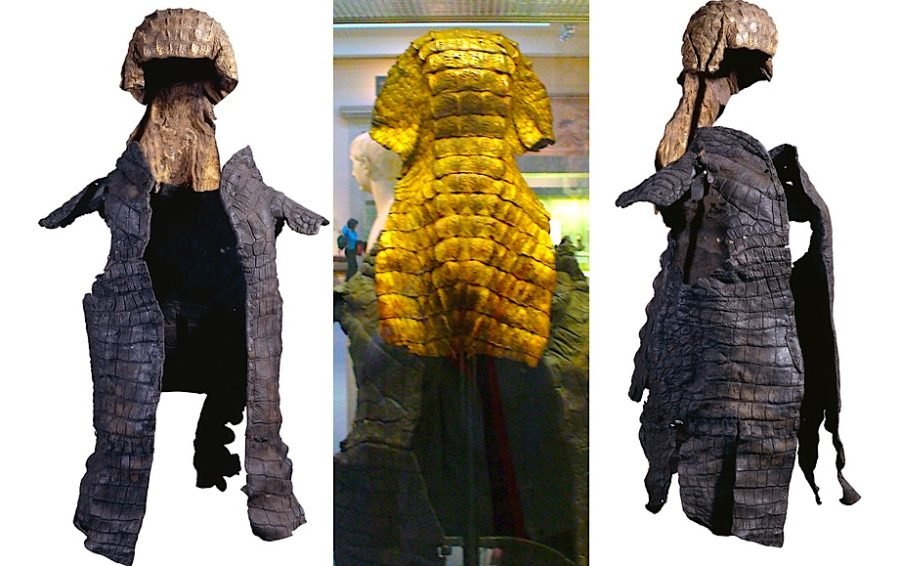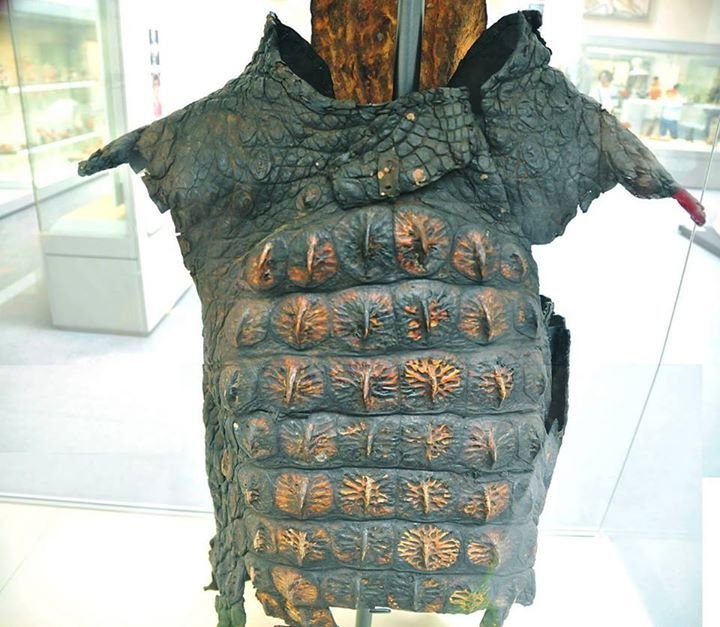In the past, we've examined some hilarious forms of body armor for both human and hound.But in terms of sheer flamboyance, it's hard to beat this suit of Roman crocodile armor from the third century, AD.
It's unclear if this suit bestows any sort of defense bonus against ochre jelly, so you'll have to ask a nonplussed curator if you can try it on. This priceless suit — which was discovered around Manfalut, Egypt preserved in a grotto — was ceremonial garb typical of the neighborhood crocodile cult. The Egyptians weren't the only culture to use crocodile skin for clothing, but this regalia is perhaps the most magnificent. As the British Museum explains:
In Egypt Roman garrisons were closely integrated into civic and religious life and participated in local cults. Around Manfalout, on the banks of the Nile in central Egypt, Roman soldiers were particularly attracted to the crocodile cult centred on the sacred grottoes of the region. This imposing armour is made from the skin of a crocodile. It comprises a helmet and cuirass (body armour) and would have been used in military-style ceremonies of the regional crocodile cult.
It's giving me flashbacks to Serpentor from G.I. Joe, but then again, most things do.
Author: Cyriaque Lamar - gizmodo








